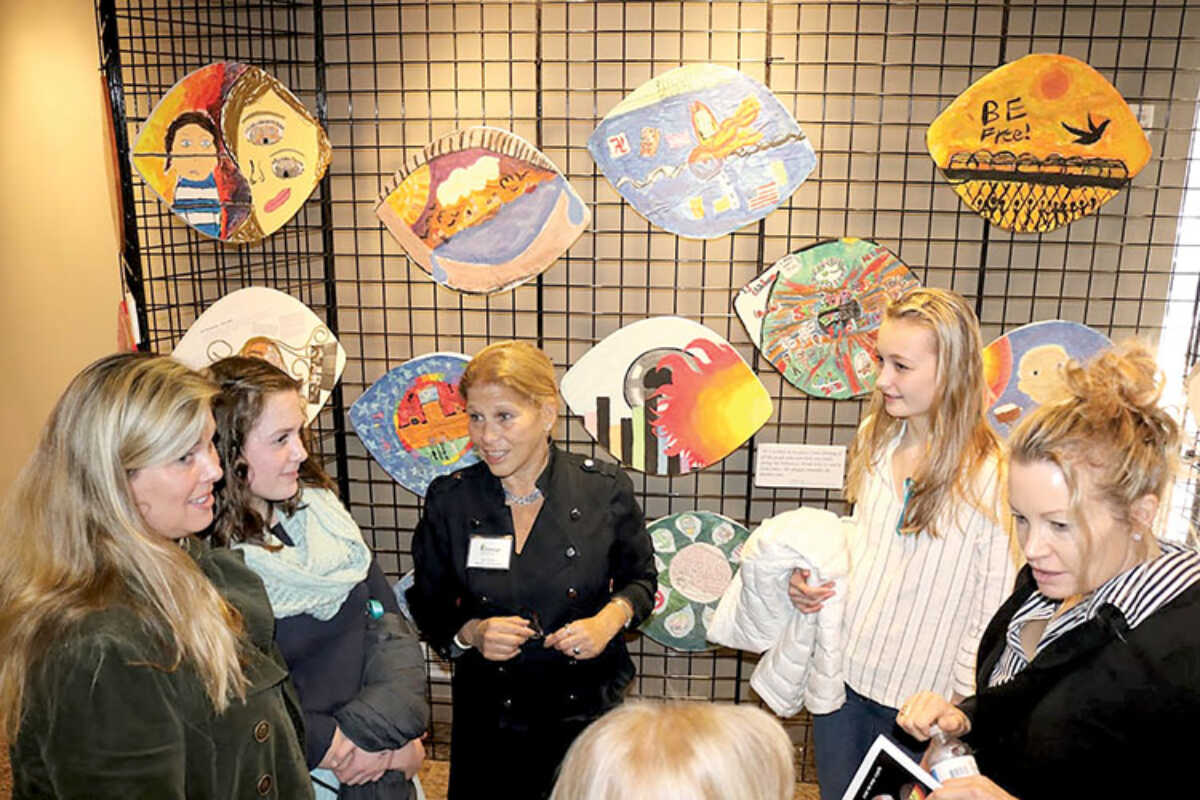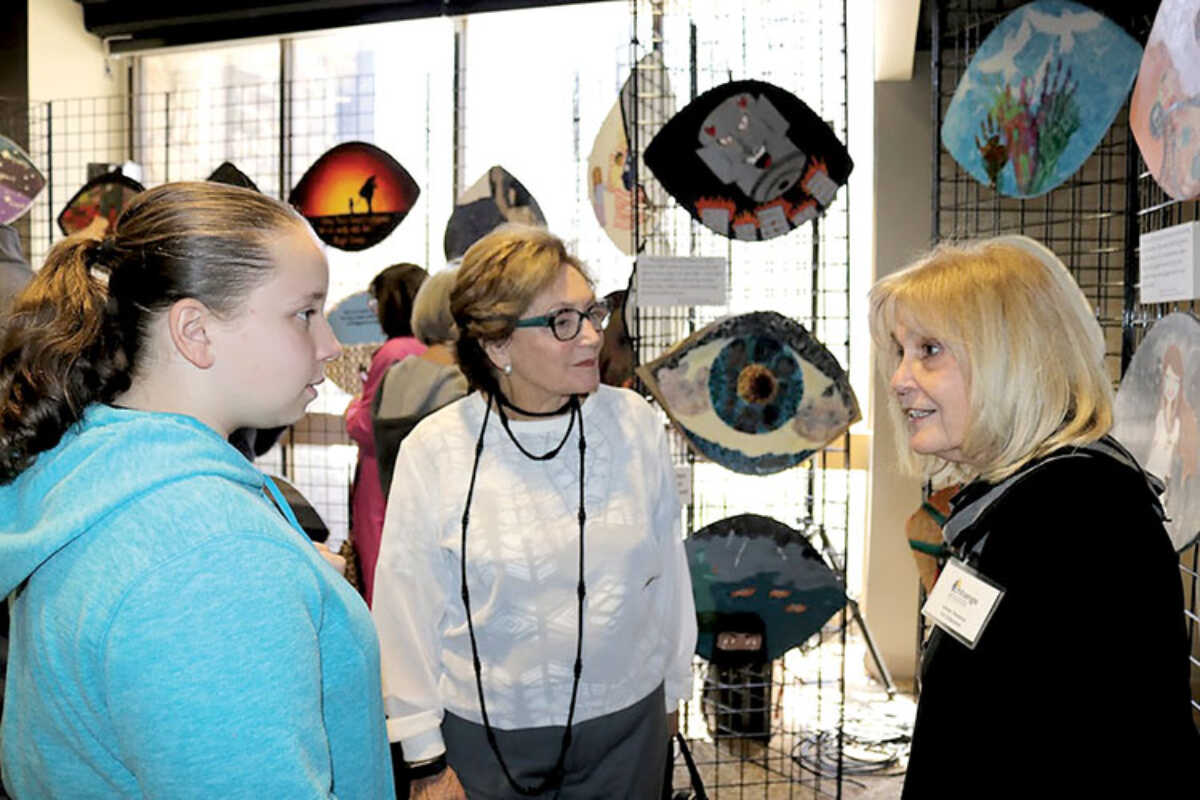History & Art for Chhange
The Power of Individuals and Memory
May 22, 2017
MIDDLETOWN – Remembering the past is often the only way to ensure a better present and future. In its 38th year – and fifth as a nonprofit organization – the Center for Holocaust, Human Rights, & Genocide Education (Chhange) on the Brookdale Community College campus takes a necessary approach to remembering the past in order to forge a connection for visitors and local students.
“Anne Frank: A History for Today,” an international exhibit created by the Anne Frank House and Anne Frank Center for Mutual Respect can be seen through June 1. Anne Frank’s famous diary, which documented her life in hiding during the German occupation of the Netherlands in World War II, is the basis of several plays and films.
Alongside the exhibit, an art installation, “Through Their Eyes,” displays works from local schools around Monmouth County. Dale Daniels of Holmdel, executive director of Chhange, acknowledges the importance of working with local students, as she explained, “We teach the human story – what happens to individuals. This helps the kids see, ‘Well, what does that mean for all of us, and what can I do now?’ ”
“Through Their Eyes” will be on display until June 29.
Chhange develops 50 to 75 programs a year for the community. Each event targets a specific subject and thematic focus. Groups of educators attend a workshop in January and their students go on to complete the art ready for installation by the first week of March. “Through Their Eyes” works seamlessly with “Anne Frank: A History for Today,” as both draw parallels to the experiences of refugees then and now. “For spring, we wanted to emphasize what is happening in our world,” said Daniels, “because today’s refugee crisis is the largest since World War II.”
Creative programs are developed for all ages, as the center not only educates about the Holocaust, human rights, and genocide, but actively engages with the community. Walking through the doors of Chhange, visitors first get the opportunity to see the students’ work, many of whom visually linked similarities facing refugees during the Holocaust to those involved in today’s crisis. Visitors can then experience “Anne Frank: A History for Today.”
The exhibit begins with a 20-minute film on the background of Anne Frank within the context of history during her short life. The tours are both self-guided and docent-guided Monday through Thursday by reservation as well as 11 a.m. and 1 p.m. Sunday, May 21. Each exhibit panel offers a timeline of Anne’s life, including quotes from her diary. The second part of the story focuses on the theme of hiding – specifically hiding in plain sight – escape, and life as a refugee.
Suzi Bloom, retired special education teacher in Rumson, is one of several members of the community who generously provided artifacts featured in the exhibit. Bloom’s mother, Ruth Halpern, originally from Vienna, Austria, traveled with her family to the same neighborhood of Amsterdam as Anne Frank’s family to seek a safe place. “Living in Amsterdam, things were getting bad like everywhere else,” said Bloom. “In order to get a visa, my family had to be seen by a doctor for a vision test. The Nazis wrote letters to doctors demanding they not pass Jews, but the doctor passed them anyway.”
The Halpern family traveled from Europe to Hoboken on the Pennland, a Dutch ship that carried refugees to the United States, then settled in Red Bank. Halpern, in an essay written during her time at Red Bank High School, “In the Mirror of Remembrance,” recalls her experience immigrating to the United States.
Through this powerful exhibit, Chhange aims to make connections between the immigrants then and now and their importance in the community. Chhange, a trailblazer in advocacy and a collaborator with the Association of Holocaust Organizations, will be unveiling a permanent exhibit, “Journeys Beyond Genocide” on Oct. 22, featuring four phases: life before, build up to tensions, genocide, and afterwards, as survivors create successful lives for themselves despite adversity. Redefining the term survivor is another facet of this exhibit, as it is not just limited to concentration camp survivors but extends to those in hiding and those seeking asylum as refugees. “These are people who moved to our community,” said Daniels, “Their stories are here. We see them as people before they become victims.”
This article was first published in the May 18-25, 2017 print edition of The Two River Times.

Chhange’s director of education, Jane Denny, with student artists from Forrestdale Middle School in Rumson. Photos courtesy Chhange

Student artist Madison Miller, artist and Holocaust survivor Claire
Boren, and artist and teacher Arlene Smelson.
